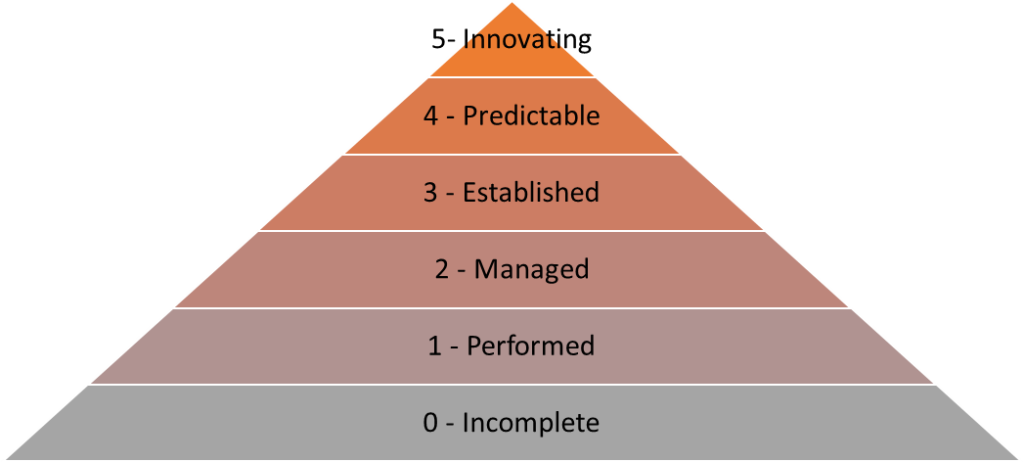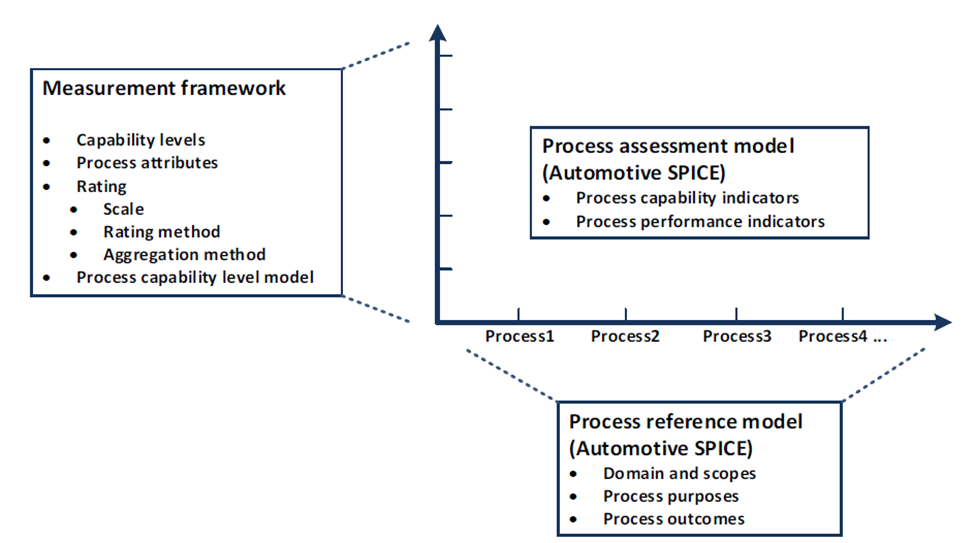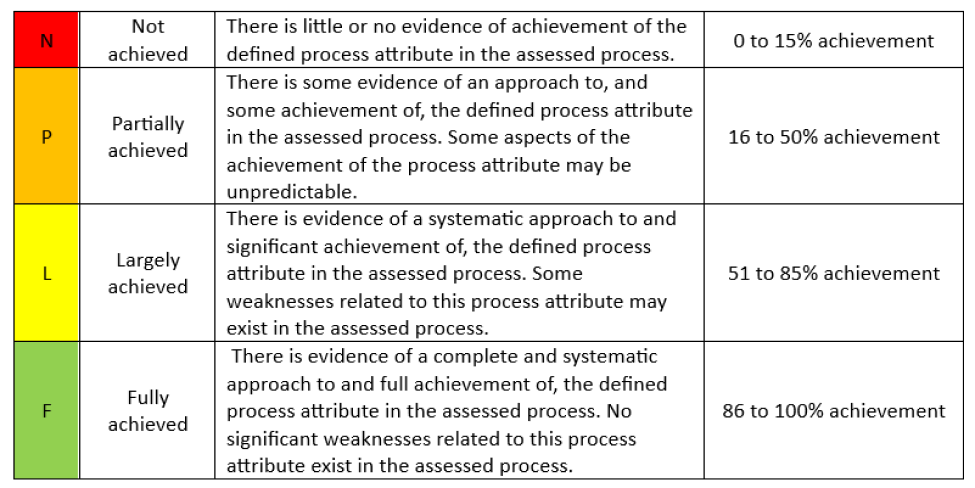Introducing a flawless product has always been a goal of all OEMs in the Automotive Industry. Unfortunately, product development has become more complex over the years. A growing number of suppliers involved creates a situation requiring checking if teams provide the correct elements of your final product. The purpose of ASPICE is to assess process steps and give tools to put a rating of your partners’ process development.
ASPICE (or Automotive SPICE) is a standard framework applied to company processes to avoid risks and minimize failures on the end user. It provides methods to score each supplier and their whole process structure.
Within the ASPICE framework, you score processes with a 0-5 capability determination scale.

Each level means:
To simplify the approach, most OEMs are looking for partners that can achieve level 2 or 3, which gives OEMs reason to believe that a partner delivers correctly created elements. It lets OEMs avoid problems at the end of product development. Level 2/3 represents a situation where your organization has:
The assessment process bases on a two-dimensional framework (graph from official AUTOSAR Guideline V4.0):

The Y-axis points let us assess each process step individually.
The X-axis follows an assessment of the process step based on points/practices provided by the ASPICE standard.
To better understand the scoring system, we need to introduce some wording in ASPICE:
In addition, each process step in ASPICE is described by:
Assessment score is based on scale NPLF where letters stand for:

To achieve capability level 1, a company needs to get a score of L or F on corresponding process attributes. PA1.1 has only one generic practice. It is to fulfill all base practices associated with the assessed process steps. Each step is scored individually.
To achieve capability level 2, you need to achieve a score of F on the previous level (PA1.1) and at least L or F in the newly introduced PA2.X points attached to it. The same logic applies to achieving levels 3, 4, and 5.
Rating your capability level will give you an overview of where your process is, where there are flaws and possible corrections.
If you would like to find out more about ASPICE, I suggest looking for free guideline documents and a pocket guide that can help you understand each process step. Next time, I will try to explain how to use ASPICE to asses your product life cycle processes.
Tailoring car interiors to the driver is no longer a luxury but an essential aspect of modern automotive design. In the era of electrification and digitalisation, it is not only driving comfort that matters but also the evolving needs of users. Will personalisation become the new standard, or will it remain a niche trend for a select few?
Read moreWill the future of mobility be shaped by the harmony between nature and technology? Biophilic design and smart surfaces are innovative approaches that can not only improve the aesthetics of vehicle interiors but also increase the comfort and well-being of users. Will these concepts change the way we perceive cars?
Read moreVehicle interiors reflect local traditions and lifestyles. Scandinavian minimalism, Middle Eastern luxury, or advanced technologies in Asia – manufacturers adapt interiors to meet market expectations. What challenges and benefits does such adaptation bring?
Read more